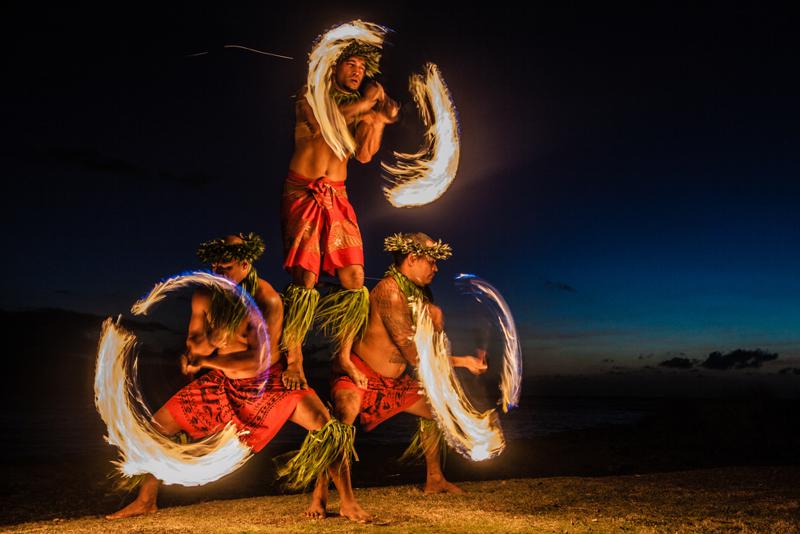Out of the many customs and traditions of Hawaii, hula dancing is certainly the most rhythmic. No matter where your Hawaiian vacation rental is situated, odds are you’ll get to see this time-honored dance being performed. But there is certainly more to the hula than meets the eye. It’s a social ritual that’s been practiced for centuries, dating back to the original Polynesian settlers of the islands. Any travelers curious about the origins and customs of hula dancing, as well as the best spots on each island to see performances, should read on to learn more about this classic Hawaiian pastime.
Origins of hula dancing
Though no one knows exactly when hula dancing began, the practice can be traced to a combination of Polynesian and Indian customs. The dance itself was a performance for gods rather than people, particularly to appease goddesses like Laka and Pele, according to Hawaiian mythology. In fact, hula was actually more of an emotional language, and many of the songs that are still sung today are meant to share stories and traditions through movement and lyrics.
 Hula dancing has long been a ritual on the islands of Hawaii.
Hula dancing has long been a ritual on the islands of Hawaii.The act of hula dancing actually became illegal during the early 19th century, when Christian settlers outright banned any hula performances due to their belief that it was a dangerous promotion of heathen philosophy. However, after King David Kalakaua came to power in 1874, he revived the ancient ritual, and even ushered in a new era of hula dancing that incorporated other instruments and rhythms from different cultures. Over the following decades, hula evolved into a contemporary piece of modern pop culture within the Hawaiian Islands, influencing everything from radio singles to luau-themed dinners.
Styles of hula dancing
There are two primary styles of hula dancing: hula kahiko, which is the ancient version of the performance, and hula ‘auana, the modern practice of the art form. Hula kahiko is a ritualistic take on hula dancing, where specific chants often accompany the choreography. Hula ‘auana is the style that’s more commonly observed throughout the Hawaiian Islands, where the dancing is influenced by the music and traditional attire of grass skirts and coconut tops. Flower leis, of course, are always worn.
Where to see hula dancing
While it’s easy to see locals performing traditional hula dances regardless of where your Hawaiian vacation rental is, there are a few competitions and festivals in particular where the best of the bunch gather to showcase their talents. One of the biggest hula competitions in the world is the Merrie Monarch Festival, which takes place annually in Hilo during early April. It’s a week’s worth of festivities that are meant to honor the ancient practice of hula performances. A series of events, parades and concerts accompany all the action.
“The Merrie Monarch Festival is one of many competitive hula events.”
A great summer festival to see plenty of hula dancing talent is the Prince Lot Hula Festival, which occurs every mid-July in Honolulu. The event is the largest non-competitive gathering of hula performers throughout all the Hawaiian Islands. The festival is free of charge, but donations going toward the Moanalua Gardens Foundation (the sponsors of the event) are encouraged. If you’re staying at a Kauai beach rental during the fall, make sure to check out the Kauai Mokihana Festival, taking place every September. Here you’ll find a week-long celebration of all types of Hawaiian culture and art performance, especially hula dancing – various competitions take place for all to see and enjoy.
Learn to hula
While watching the professionals perform the hula is certainly entertaining, there are also plenty of opportunities throughout the islands to learn this ancient art form yourself. If you’re spending the day in Honolulu, check out the Royal Hawaiian Center, a four-level retail complex that also hosts free hula dancing classes. This is a great chance to learn the actual movements and choreography from professional hula dancers, which allows you to take home authentic routines with you after your Hawaiian vacation. If you’re staying on Oahu, you can also find weekly hula classes at the Waikiki Beach Walk. The month of May here is known as Mele Mei, where every Sunday, residents gather around the beach walk to engage in all forms of Hawaiian culture and artistic expression. These are just a few of the opportunities available for travelers to learn more about the choreography and history of hula dancing, as there are plenty of other resources scattered throughout the islands that offer similar lessons.
